Evidence that ternary complex (eIF2-GTP-tRNA(i)(Met))-deficient preinitiation complexes are core constituents of mammalian stress granules
- PMID: 11809833
- PMCID: PMC65082
- DOI: 10.1091/mbc.01-05-0221
Evidence that ternary complex (eIF2-GTP-tRNA(i)(Met))-deficient preinitiation complexes are core constituents of mammalian stress granules
Abstract
Environmental stress-induced phosphorylation of eIF2alpha inhibits protein translation by reducing the availability of eIF2-GTP-tRNA(i)Met, the ternary complex that joins initiator tRNA(Met) to the 43S preinitiation complex. The resulting untranslated mRNA is dynamically routed to discrete cytoplasmic foci known as stress granules (SGs), a process requiring the related RNA-binding proteins TIA-1 and TIAR. SGs appear to be in equilibrium with polysomes, but the nature of this relationship is obscure. We now show that most components of the 48S preinitiation complex (i.e., small, but not large, ribosomal subunits, eIF3, eIF4E, eIF4G) are coordinately recruited to SGs in arsenite-stressed cells. In contrast, eIF2 is not a component of newly assembled SGs. Cells expressing a phosphomimetic mutant (S51D) of eIF2alpha assemble SGs of similar composition, confirming that the recruitment of these factors is a direct consequence of blocked translational initiation and not due to other effects of arsenite. Surprisingly, phospho-eIF2alpha is recruited to SGs that are disassembling in cells recovering from arsenite-induced stress. We discuss these results in the context of a translational checkpoint model wherein TIA and eIF2 are functional antagonists of translational initiation, and in which lack of ternary complex drives SG assembly.
Figures
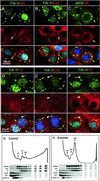


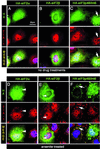
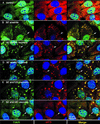

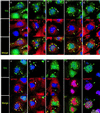
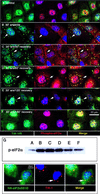
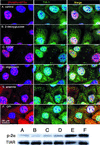
References
-
- Berlanga J, Herrero S, DeHaro C. Characterization of the hemin-sensitive eukaryotic initiation factor 2a kinase from mouse nonerythroid cells. J Cell Biol. 1998;273:32340–32346. - PubMed
-
- Bernstam L, Nriagu J. Molecular aspects of arsenic stress. J Toxicol Environ Health B Crit Rev. 2000;3:293–322. - PubMed
-
- Dever TE. Translation initiation: adept at adapting. Trends Biochem Sci. 1999;24:398–403. - PubMed
Publication types
MeSH terms
Substances
Grants and funding
LinkOut - more resources
Full Text Sources
Other Literature Sources
Miscellaneous

